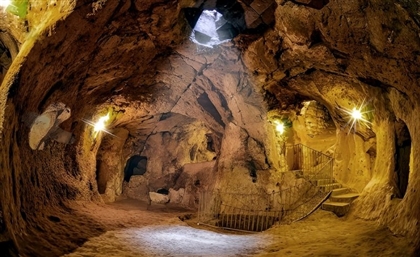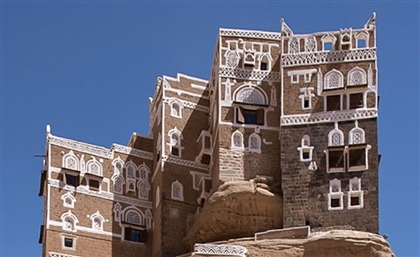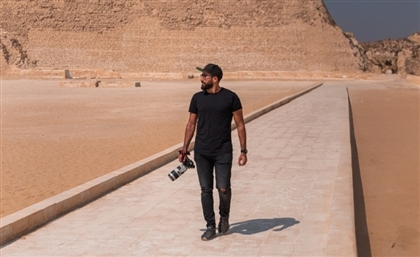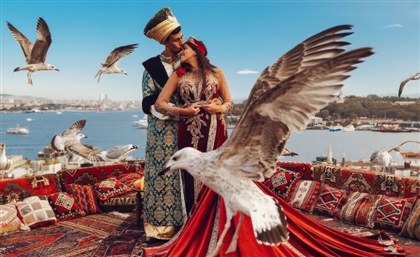This Women-Led Community Unites Egyptians With Their Ancestral Land
Founded by three Egyptian women, Kemet Tribe seeks to reconnect Egyptians with the rituals and philosophies of their ancestors.

Originally Published on September 27, 2024
The land of Egypt has been known by many names in her winding history. Before ‘Misr’, she was ‘Hikuptah’, ‘Ta-Meri’, ‘Aegyptos’, ‘Mizraim’, ‘Deshret’, ‘Misr El Mahrousa’, ‘Land of the Pharaohs’, and—to this day—she is lovingly referred to as ‘Om El Donia’ (Mother of the World). The one name that predates all of these, however, is ‘Kemet’, which translates to ‘black land’, or ‘fertile land’. The name is derived from the Ancient Egyptian word ‘kem’, meaning ‘black’, and refers to the dark colour of the rich soil that lined the banks of the Nile River.
‘Kemet’ is a name which embodies the ancient history of the land, stretching from the beginning to the end of the Ancient Egyptian civilisation, over the course of approximately three thousand years. It is is also the chosen name of a women-led community based in Cairo, whose foundational goal is to reconnect Egyptians with their ancestral land, rituals and philosophies by organising retreats to sacred sites across the country, and, crucially, operating with love, respect and reverence for their lineage.
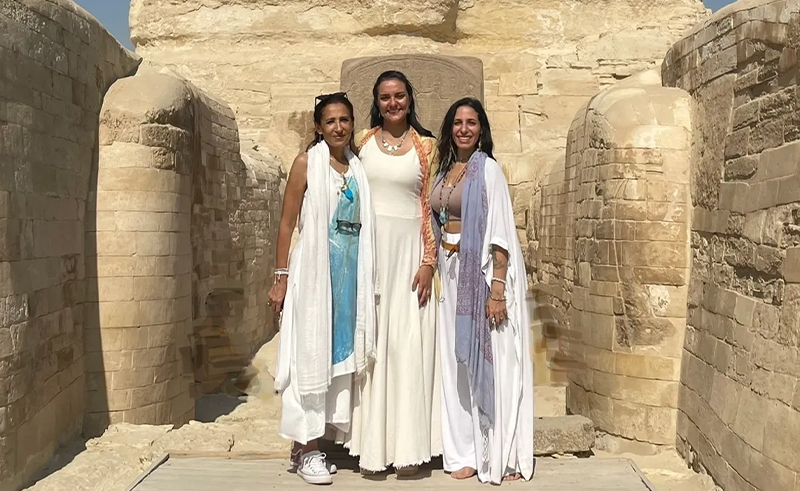
The three founders, Nymphaea, Hala, and her daughter Shakinah, met at a hieroglyphics course three years ago, and were immediately bonded by their shared wonder for Egyptian history. More importantly, they were bound by their desire to create a community of like-minded individuals to correct a misguided global narrative written by people unconnected to the land. Within less than a year of meeting, Kemet Tribe was born, bringing together the sons and daughters of an ancient land, linked to Ancient Egypt either by blood or by spirit.
The three women speak with an impressive conviction and touching fervour about the need to retrieve lost wisdom, reclaim sacred sites and rewrite a history riddled with misconceptions, in order to restore a balance to the land, and the world, that has been lost for many centuries. They believe that there lies a divine knowledge in the history of their forefathers, that all of the potential of the ancient civilisation lies dormant, awaiting a collective renaissance.
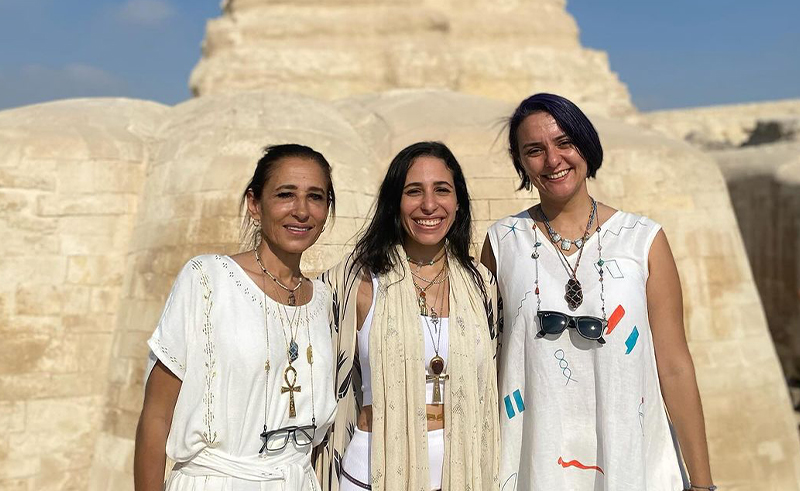
“Kemet Tribe is an idea,” Nymphaea, the resident Chantress who is versed in the Ancient Kemetic tongue, shares with SceneTraveller. “It’s a movement to change the narrative, and to change how Egyptians connect with their roots.”
She goes on to explain her frustration with the treatment of sacred sites in Egypt, how they have been exploited for touristic purposes and are now constantly surrounded by tour guides who speak in raised voices about the technological fascinations of the ancient architecture alone, without any curiosity about the ancient people themselves and the ways that they might have lived, loved and celebrated the everyday.
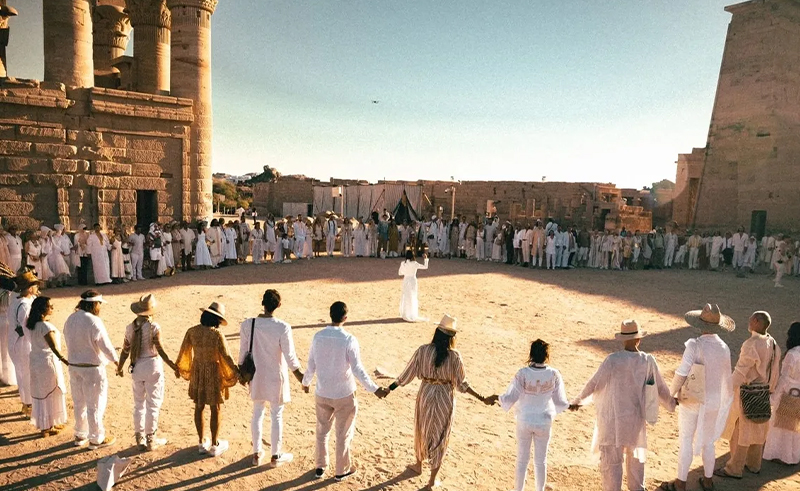
Her belief is that Egyptians have lost touch with their history in part because their sacred sites have been privatised against them, to such a great extent that they rarely get the opportunity to engage with their own monuments, to look at them in silence, with admiration, and amongst their own people. Aiming to reverse this disconnection, Kemet Tribe organised the first private access visit to the Pyramids of Giza by and for Egyptians, something which, shockingly, had never been done before. The tour gave a small group of Egyptians the chance to readjust their perspective of the monuments, to be part of their own personal and ancestral history, rather than simply experiencing them as “mysterious blocks of stone”.
Shakinah, the High Priestess and Alchemy Leader, clarified that their mission is not to emulate Ancient Egyptian society and practices exactly, but rather that “the importance of the work that [they] are doing lies in the authentic connection [they] cultivate with [their] roots, and this is the only way that countries can be strong and great. If you cut down a tree, it will always grow back if the roots are strong.” Kemet Tribe refers to this necessary reconnection with the land of the Nile as ‘soul remembrance’—the idea that the spirit of the Kemetic ancestors still lives within every Egyptian and that a wealth of lost knowledge remains built into their DNA.
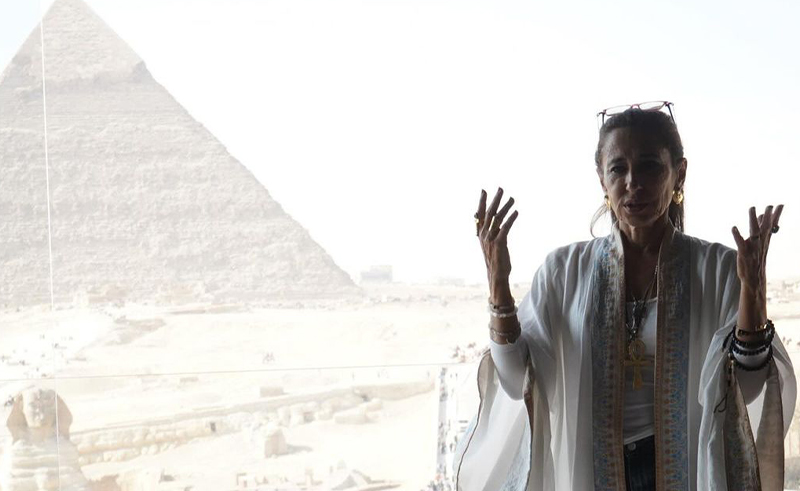
Hala, the True Guide and an Egyptologist with over 37 years of experience, shares how she has always felt that she is “the grandchild of an important, impressive and mysterious legacy”, but adds: “I feel that as Egyptian people, we often forget who we are.” The enduring presence of Ancient Egypt in the land today is eclipsed by misinterpretations in history books, mistakes that have created a chasm between what Ancient Egyptian identity looked like and what modern Egyptian identity looks like. One such example of this is the embedded presence of Kemetic words in Arabic, like the name ‘Sara’, derived from the words ‘sa’ and ‘ra’ meaning ‘son’ or ‘daughter’, and ‘the sun’, respectively.
What’s more, the misconception that Ancient Egyptians worshipped multiple gods has created a certain degree of separation between present-day Egyptians and their history, given that most Egyptians identify as monotheists, be they Muslim, Christian or Jewish. However, according to Hala, the ancient word ‘neter’ has been falsely identified as ‘god’, when it actually translates to ‘nature’ or ‘force’. Thus, the ‘neteru’ or ‘gods’—like Isis, Osiris and Sobek—that historians purport to have been worshipped in Ancient Egypt were, in fact, all different manifestations of one deity, and the people of the land have always worshipped one god only.
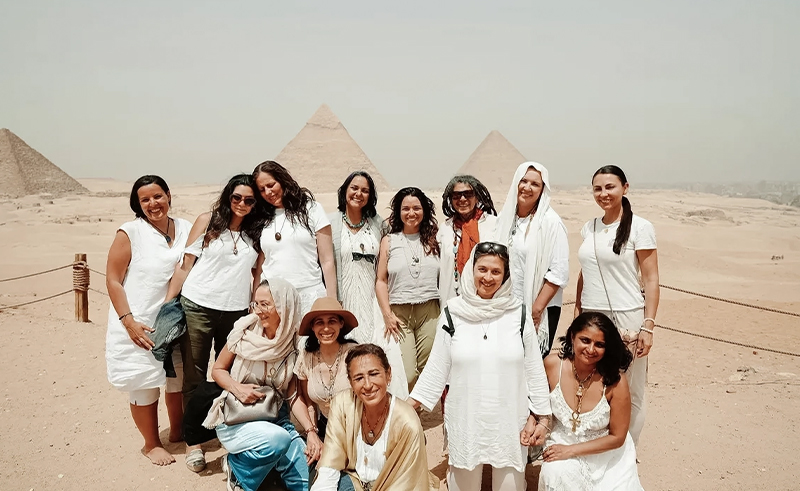
“It was a journey, and at the beginning it was very challenging, but my study of Ancient Egypt and connection to it has only completed my faith in Islam. I’m a better Muslim now, because I’m more open.” She then shares how although the depictions of multiple gods and goddesses might be repellent to some, she started to see similarities between ancient beliefs and her own faith, in the positions of prayer, attitudes to good deeds in preparation for the afterlife, and rituals of pilgrimage. “In a way, the Ancient Egyptians were the first Sufis, the first to connect with the sky and the soul.”
Shakinah added that the Ancient Egyptian civilization, in her opinion, was the source of many religious rituals that we attribute to other peoples or other eras. For example, washing oneself with water was necessary before entrance to the temples for worship, something known amongst Muslims today as ‘wudu’. Not only that, but the first known pilgrimage site in history is the Osireion at Abydos, and the Arabic word ‘hajj’ comes from a Kemetic word meaning ‘pure white’, like the robes that the first pilgrims wore. Kemet Tribe is, in fact, running a ‘soul remembrance’ retreat to the Osireion in December for the Winter Solstice, because the site is not at all open for public access.
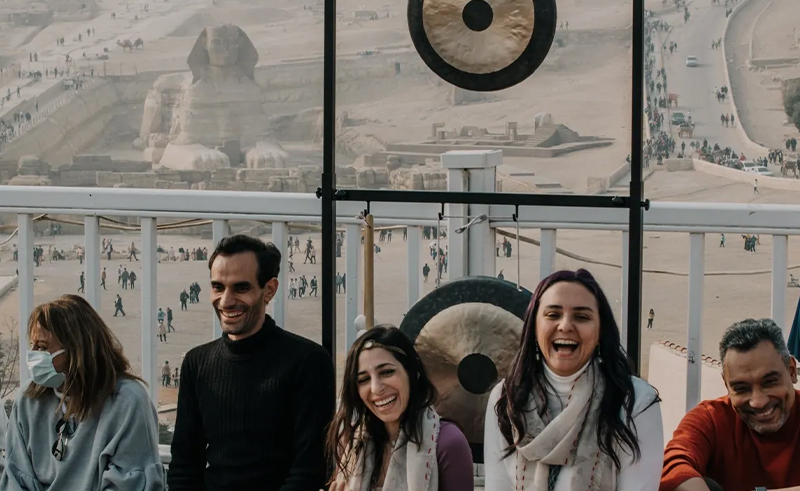
Whilst Kemet Tribe’s ‘journey of revival’ came to complement Hala’s relationship with her faith, Nymphaea makes it clear that “Kemet Tribe is not a religious movement, but more of a movement centred around consciousness.” She goes on to speak of how she believes her religious practices to be of little importance in comparison with the positive frequency with which she lives her life. “Some Egyptians disagree with what we believe or what we say,” Shakinah adds. “The disagreement can be there, but you must know about the history, and you must try to see it. Disconnecting from our past and seeing it as a bad thing can only make this nation and its people weaker, not stronger.”
- Previous Article You Can Now Explore Oman on Your Layover With Oman Air's New Programme
- Next Article Six Unexpected Natural Wonders to Explore in Egypt
Trending This Month
-
Nov 29, 2025





